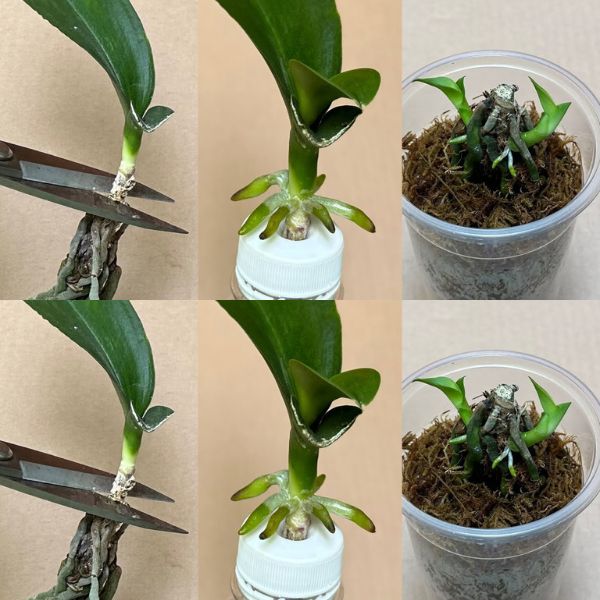
Which plant is more suitable than the orchid to give your home a touch of elegance and color?
This characteristic plant, native to tropical countries, is one of the most loved and hated at the same time: its beauty goes hand in hand with the difficulties of cultivation.
In fact, having a healthy, blooming, and beautiful orchid is not impossible. Just follow a series of tips and pay attention to a few details.
Many, however, make mistakes that can compromise the beauty and health of the plant, without even realizing it and repeating for a long time the same wrong gesture or behavior.
Let’s see which are the most common, to avoid them and keep our orchid thriving.
Wrong Vase
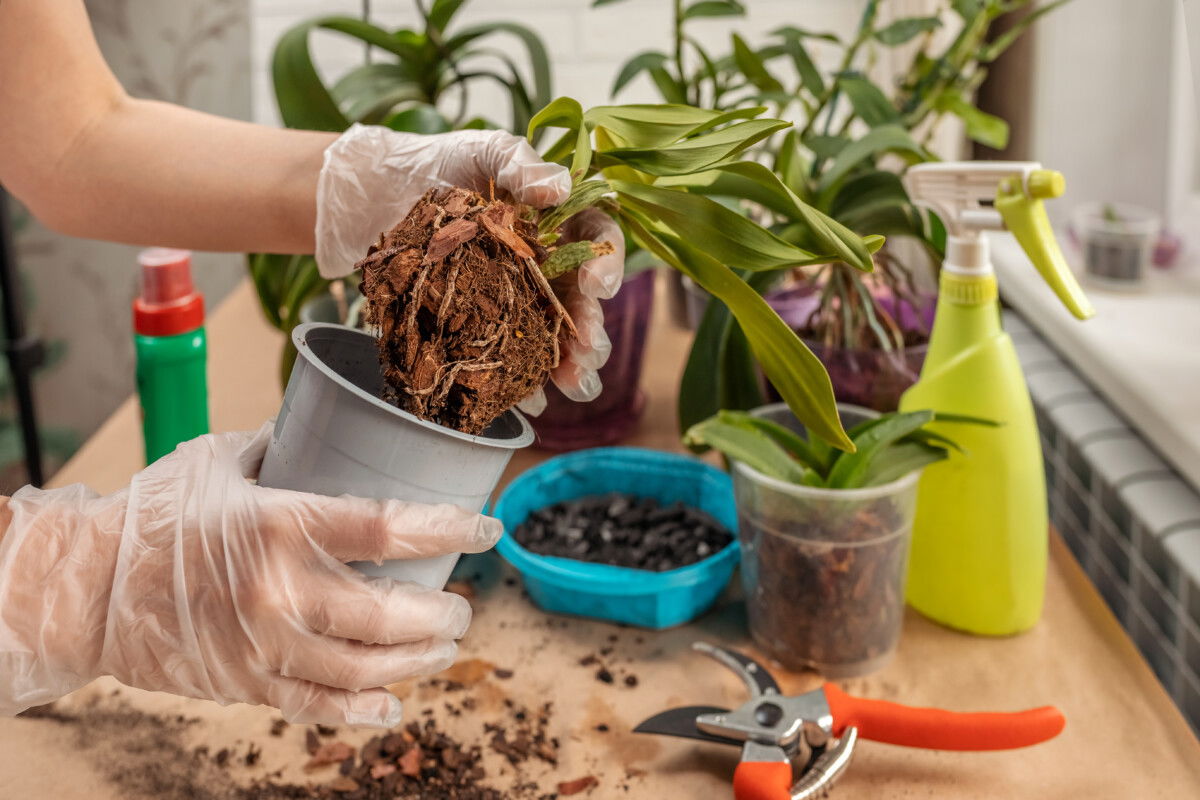
The most common mistake made by those who own this wonderful plant is to store it in a dark plastic pot.
The roots of the orchid, in fact, grow healthier and stronger if they are directly touched by light. That’s why it’s helpful to choose a clear vase.
Usually, the seedling is already sold in this type of pot. When not, one of the first things you should do when you bring it home is to replace the vase.
In addition, by being transparent, it will be easier for you to check the condition of the roots and you will be able to detect any problems involving them earlier.
Direct light
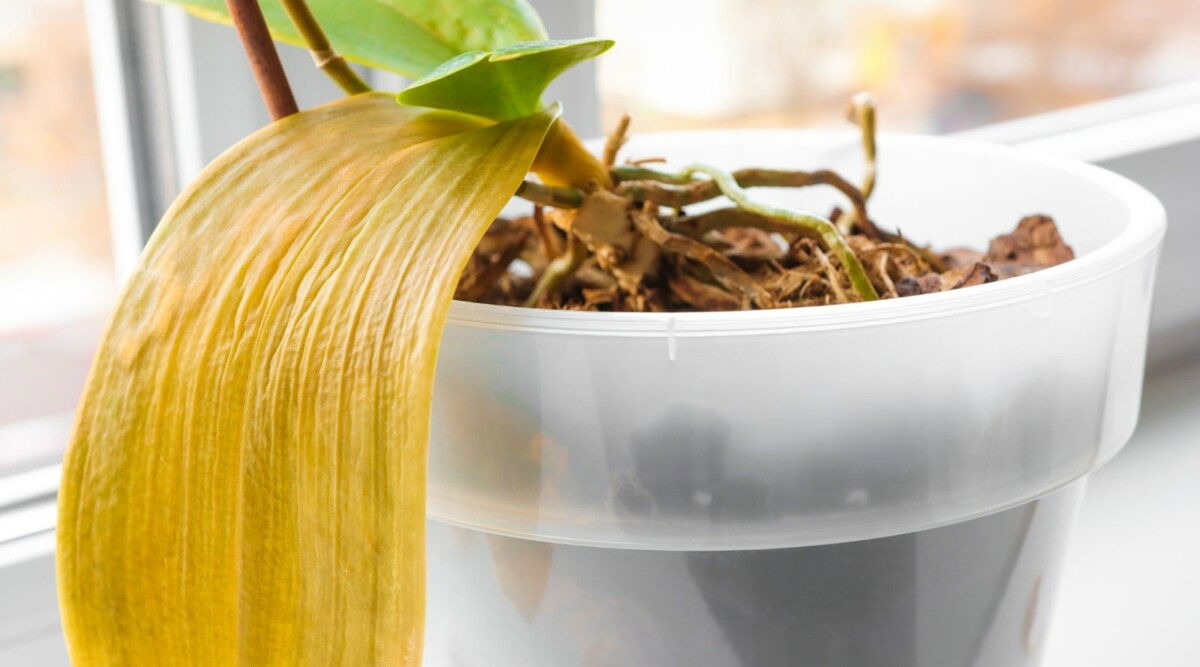
Another very common mistake: you put the orchid in direct light !
Direct sunlight is very harmful to this plant which, accustomed to tropical places, is usually covered by the shade of larger plants.
When you put the orchid in a place where it gets direct sunlight, its leaves can be damaged by too much light and too much heat.
In addition, the buds may “burn” and stop flowering.
One of the first symptoms of too much light is the change in color of the leaves that gradually begin to yellow.
The solution? Put this plant in a bright place , but where the light reaches indirectly. For example, on a windowsill facing north or south or with tempered glass.
Low humidity
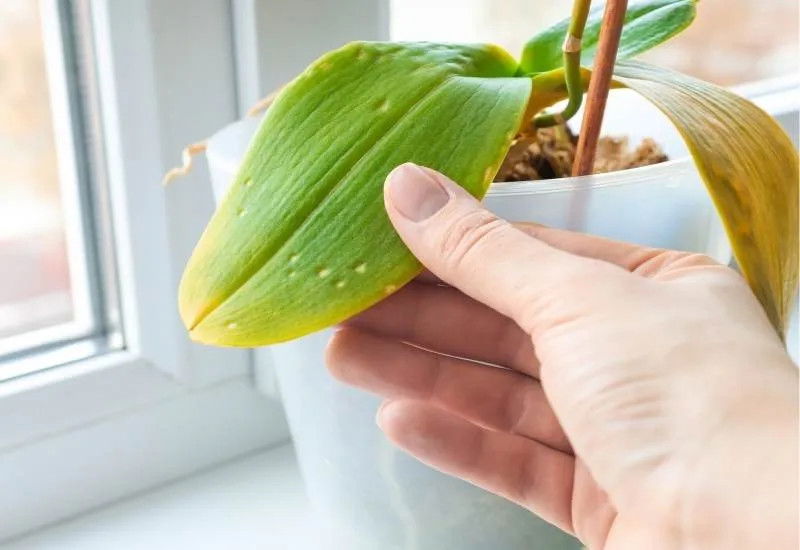
Humidity is critical for your orchid to survive: keeping it in a place where it tends to be low and the air is dry means causing it to wilt and die.
For this plant, the optimal humidity rate is not less than 60%. That’s why it’s important to store it in a damp place or room .
As a rule, at home, the most humid rooms are the bathroom and the kitchen.
However, if the air in your house tends to be dry all over, you can resort to a very easy trick: every 2-3 days, spray a little water on the foliage of your orchid.
In this way, the plant will enjoy an optimal humidity index.
Inadequate fertilizer
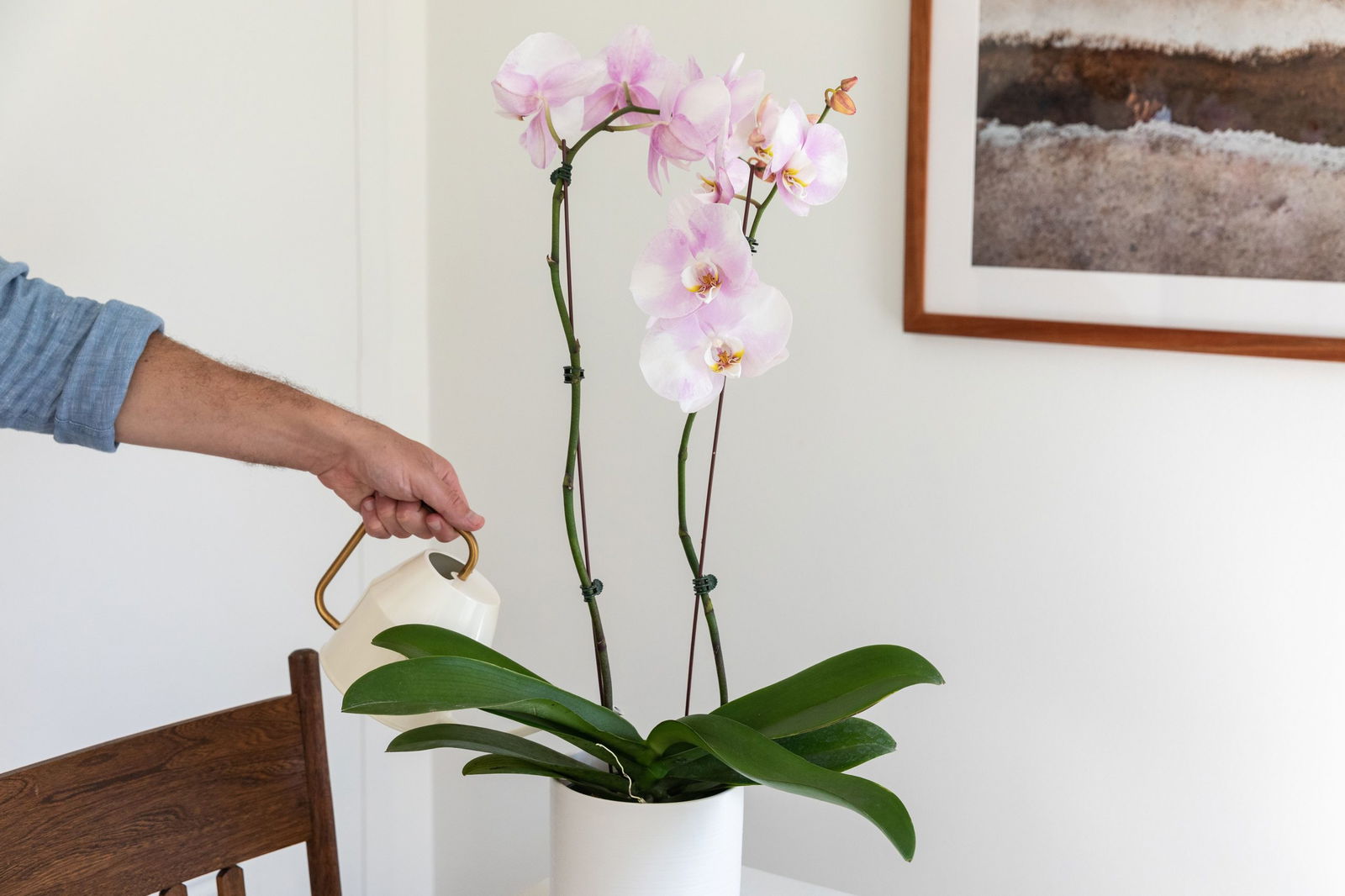
Fertilizing without paying too much attention to the composition of the fertilizer: a very serious mistake that can cost the health of our orchid.
This plant actually needs to be fertilized with specific products that have a certain amount of nitrogenhigher than phosphorus and potassium.
Balance is achieved when the 30:10:10 formula is respected , i.e. 30 parts nitrogen to 10 parts phosphorus and 10 parts potassium.
When the nutrient supply is unbalanced, the vegetative cycle of the plant can be altered, with serious consequences.
Also remember to follow the instructions for administration specified for each fertilizer: normally, in the warm months, it is necessary to fertilize every 2 weeks. On the other hand, in the cold months, fertilization should be suspended.
Too much water
Just because the orchid needs regular watering doesn’t mean it needs to be watered every day!
The water needs of this plant vary depending on its life cycle and temperatures.
In the cold months, therefore in autumn and winter, watering should be kept to a minimum: it is enough to keep the soil slightly moist.
When it’s hot, however, water more often. There is no rule, water when the soil dries out and is no longer wet.
Too dark environment
Just like too much light, too much darkness can be harmful to your orchid.
Remember that you should never place this plant in a blind bathroom or anywhere else without natural light sources.
Some, then, fear that the summer light will damage them and eclipse them: in reality, this plant still has a great need for brightness. Always choose a place where light is present for many hours a day.
This rule is particularly important to promote flowering.




















